Introduction
The name of Mieczysław Karłowicz remained unfamiliar to the most for decades. In the recent past though his music has gained a new appreciation, and not only by the closed circles of music nerds like myself. So much that it is included not just in regular programming but also in conducting auditions.
The fact of the matter is that Karłowicz didn’t have enough time: born in 1876 he died in 1909 because of a hiking accident.
He was born in present-day Belarus to Jan, a Polish historian, and musician. From an early age, he began studying the violin for which he would later compose his only concerto.
He studied in Warsaw, then moved to Berlin where he studied with Heinrich Urban to whom the Serenade for strings is dedicated. From 1906 to 1907 he also studied conducting with Arthur Nikisch.
In his short life, Karłowicz wrote a symphony in E minor, a violin concerto in A major, and several symphonic poems, including Odwieczne pieśni (Perennial songs), Stanisław i Anna Oświecimowie, and Powracające fale (Waves that return). He composed several songs for voice and piano. Unfortunately, many of his compositions were lost during the Second World War.

Mieczysław Karłowicz in 1910
His compositions are written in a late-Romantic style and show affinities with those of Richard Strauss, Albéric Magnard, and Isaac Albéniz. Karłowicz’s music is at the highest levels of Polish music between that of Fryderyk Chopin and that of Karol Szymanowski.
The Serenade for strings – premiered in 1897 under the baton of then Karłowicz’s teacher Heinrich Urban – is in 4 movements: March, Romance, Waltz, Finale and it shows Karłowicz talent for lyrical lines and his affinity with Tchaikovsky and Dvořák’s music.
Mieczysław Karłowicz – Serenade for strings
Should you need a score you can find one here.
Allegro Moderato – Tempo di marcia
The 1st movement begins with a 20 bars introduction: the cellos and basses pose a 4-bars question, answered by the violins. Notice that the violas enter 2 bars later while the first violins are playing divisi. This confers a certain lightness to the phrase.
The phrase is repeated, reaching higher, and the violins’ answer serves as a bridge to the march.
The structure of this movement is kind of unusual for a first movement: the introduction leads to a march, with 2 themes, and a short, faster section leading back to the march concludes the first part; then we have a Trio – something typical of a Menuet or a Scherzo, generally the 3rd movement of these kinds of compositions – also split in 2 parts; and finally a repeat of the march with the addition of a coda.

Oops...
This content is available for free with all memberships.
Already a member? Login here.
Not a member yet? Subscribe today and get access to more than 80 videos, scores analysis, technical episodes, and exercises.
The first theme is assertive but not too much in your face if you pardon the expression.
Second violins and violas actually add a touch of gentleness at the end of the 2nd and 4th bar made even more evident at the end of the phrase, on bar 28
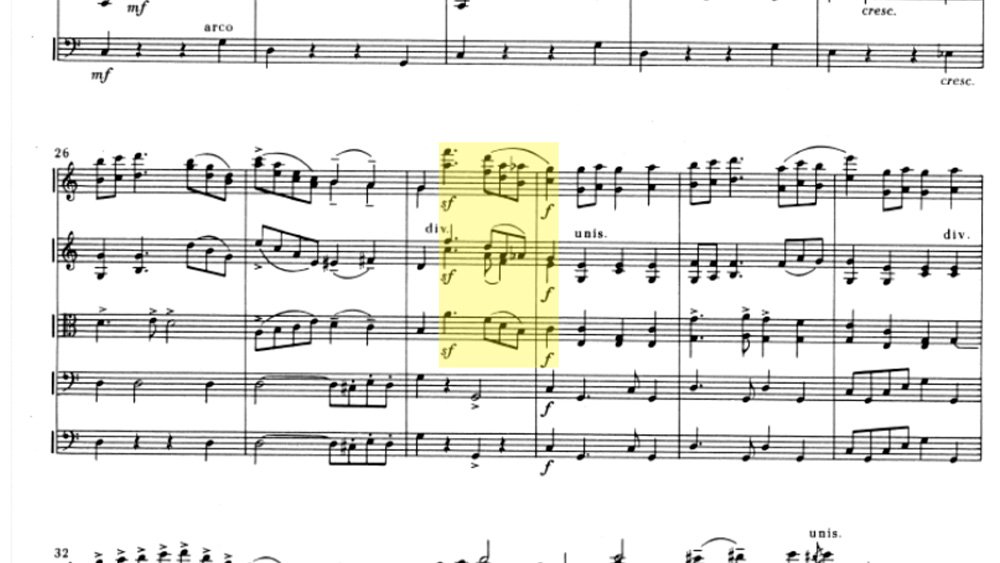
There is the rhythm and character of the march here, but it’s not a rustic march. It’s never violent or too heavy but much more on the elegant side.
The second time around the first violins play in octaves. Notice how Karłowicz often splits the section – violins and violas playing divisi – in order to gain different voicings and acoustical effects.
From a G major, we jump to an Eb7 chord, dominant to Ab, and the second theme comes in. Notice the flourishing of half of the second violins.
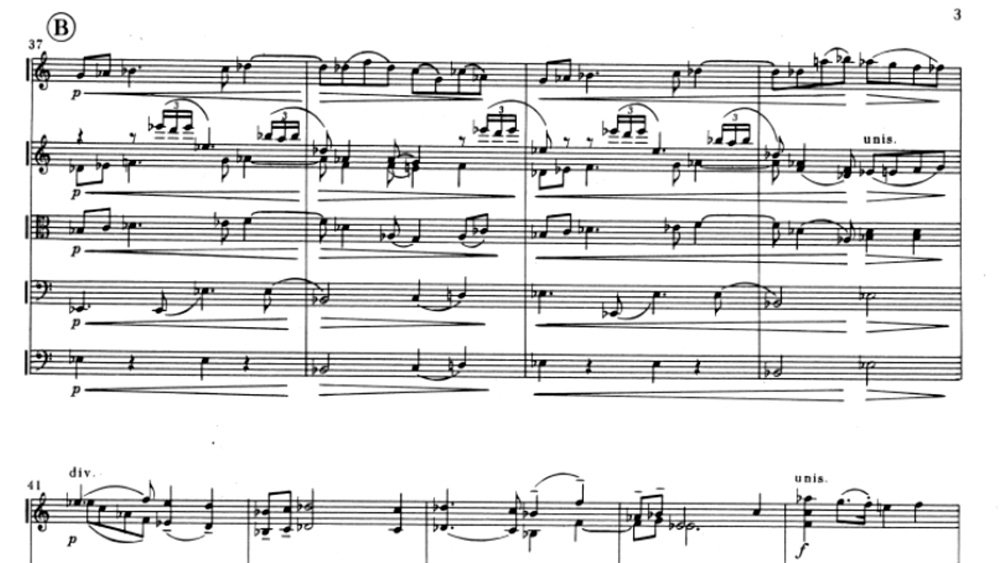
The phrase structure, throughout the whole movement, is extremely clear, almost classical (as in Haydn and Mozart) in its mathematical proportions: the march was built on two 8-bars phrases; and so is the second theme. Moreover, the first 8 bars of the second theme can be split into two 4-bars phrases, and even further: the first 4 bars are a phrase of 2+2.
The double bass stands down on the second half of this phrase while a small game of counterpoint plays out in the second violins and violas.
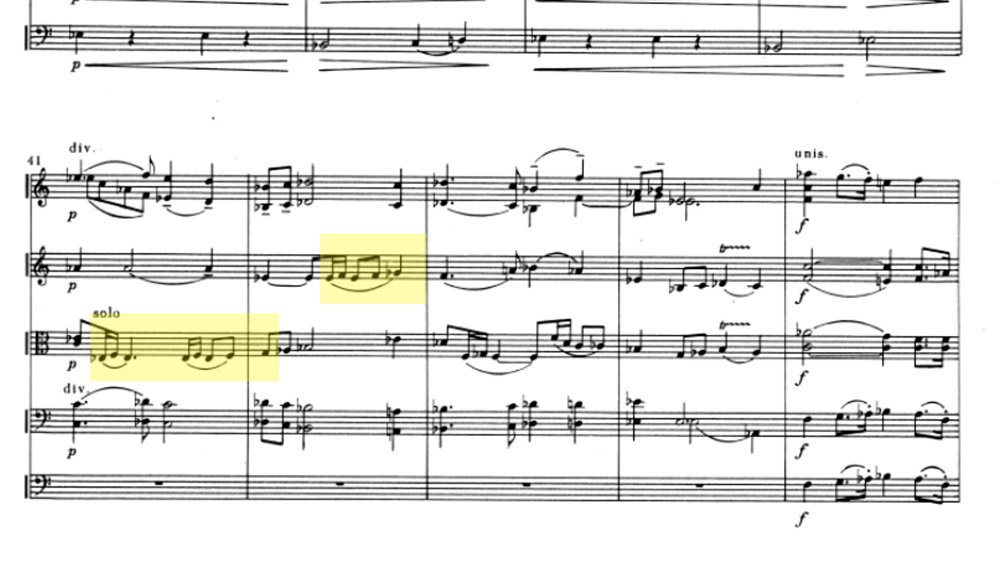
All of a sudden the first drama since the beginning of the piece bursts in with a powerful F minor and the added weight of the double basses. Notice that the rhythmic base is always the same of the very first bar of the march, except that the 2nd beat is now dotted
Technical tip
One point that needs attention in this first movement is the first ritardando: it’s a big ritard in the span of only 1 bar.
To make it work musically, you need to use a short downbeat as the hook point and expand your gesture; then stop on the last beat and give a pick up in the new tempo. Also, if you started in 2, go into 4 at bar 19

For a technical analysis, along with some exercises, take a look at this other video
4 bars and an accelerando built on the dotted rhythm takes us to the Vivo section. The accelerando makes use of a widely adopted composing trick: the exact same music cell is played by different sections at different times, dovetailing each other. This increases the sensation of moving the tempo forward. Notice the viola part on bars 51-52
The Vivo – which means lively – section is nothing but a bridge which in 6 bars takes us back to a repetition of the first phrase. Some small changes – like the extended chromaticism of the second violins – and the end of the phrase and the first part of the March closes
The second half of this section employs the musical material of the first part of the Trio in order to close the phrase, again, in G major.
After a canonical repeat, the march is repeated almost entirely, with the addendum of a coda: an energic build-up takes as to a Più’ mosso which makes use of both the first musical idea and its dotted variant, closing the movement in a powerful C major.
Andante con moto
The second movement has the qualities of a nocturnal romance, again reminding of Dvořák.
Karłowicz starts again with an introduction: the key signature suggests an Ab major or an F minor: as a matter of fact, the first chord is a C9. It’s a decoy. The harmonic scenario remains unstable, letting us wonder what’s going to happen and where we will end up
A bit of clarity comes after 8 bars where the Ab chord dominates and 4 bars after we are introduced to the theme, lovely sung by the cellos, playing espressivo in their mid-high register.
Notice how the cello part is the only one that really counts and has the freedom to move around. Everyone else is accompanying with gentle homorhythmic pizzicato.
The tension wears off and the main rhythmic cell returns connecting to the reprise of the main theme. The main theme is sung once again by the cellos, but this time we have a countermelody on top, played by the first violins, while the accompaniment has changed to much more than the initial pizzicato
The phrase is taken over by the first violins in octaves while the countermelody goes to the violas. The phrase opens on a typically romantic forte and then slowly folds back, using, once again, the now very well known rhythmical cell. The same cell is used to build the coda closing the movement in Ab major
Waltz
We left the second movement on a lovely nocturnal Ab major. The third movement of this serenade is a Waltz, something reminding of Tchaikovsky’s music, for which Karłowicz’ had a particular admiration.
Once again, Karłowicz gives us 8 bars of introduction. The mood changes drastically from the atmosphere of the previous movement, grabbing the attention of the listener
And then, just like that, Karłowicz gives us a short development which takes us back to the main theme of the waltz. Notice how the first violins are now playing divisi: the theme is in the bottom part while the top part plays a counterline, enriching the theme even more but always with utter elegance
The episode closes the first part of this movement. The central part of it is a Poco più’ mosso, opening with an assertive statement of the cellos and the double basses. After 4 bars, the answer is provided by the violins and violas, again trying to unbalance the listener with off-beat accent
The same model is used for the second half of the phrase and close in F# minor. After the canonical repeat, we have a mini-development of 8 bars. Notice the structure, based on repeating models, before we return to the first phrase of the Più’ mosso
On the second iteration, the phrase is passed to the second violins while the first and a delicate accompaniment on top. In a typical Tchaikovsky’s style, the theme keeps coming back, passed from section to section, colored by different counterlines and answers until the first cell of the waltz is used to bridge to the return of the first theme
The waltz is playing without repeats and its material used to create an accelerando leading again to the Più’ mosso used now to create a long coda to the movement, where bits and pieces of the first theme come together closing the movement in full energy
A second theme that is quite unexpected. Not for its position within the movement but for its key: normally we would expect a G major but Karłowicz opts for an E minor moment. The sadness of the episode is underlined by the indication of Più’ tranquillo, thus slowing down the tempo, and by the register in which is played by the first violins, mid-low
Things change quickly and the simplest cell derived from the main theme is used for a question/answer moment between the violins and the violas and cellos. Finally, the whole first theme’s cell is used to build a progression leading to the recapitulation.
The main theme comes back bridging to the coda. The tempo increases, moving from a Più’ Allegro to a Molto vivo and the serenade ends with an energic sweep
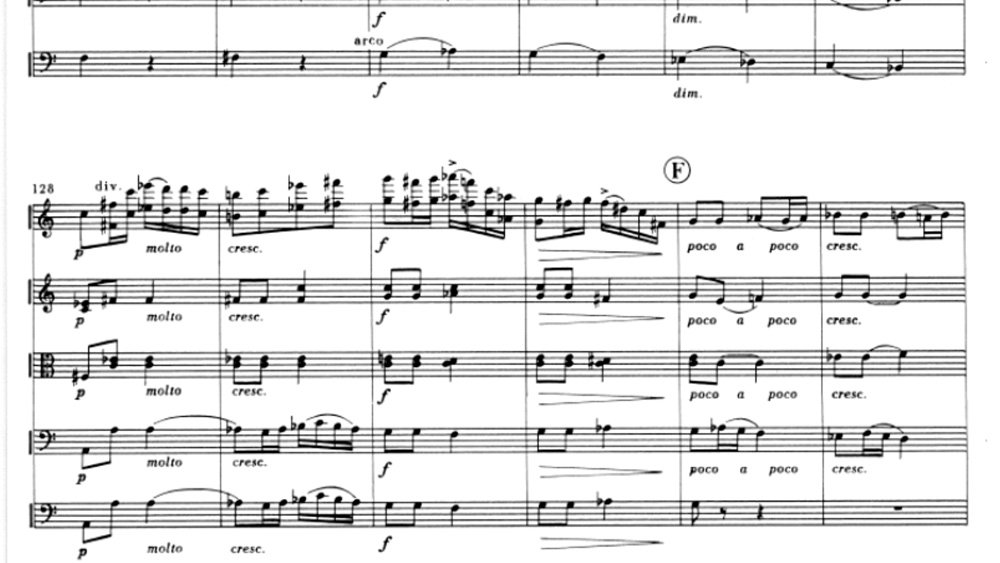


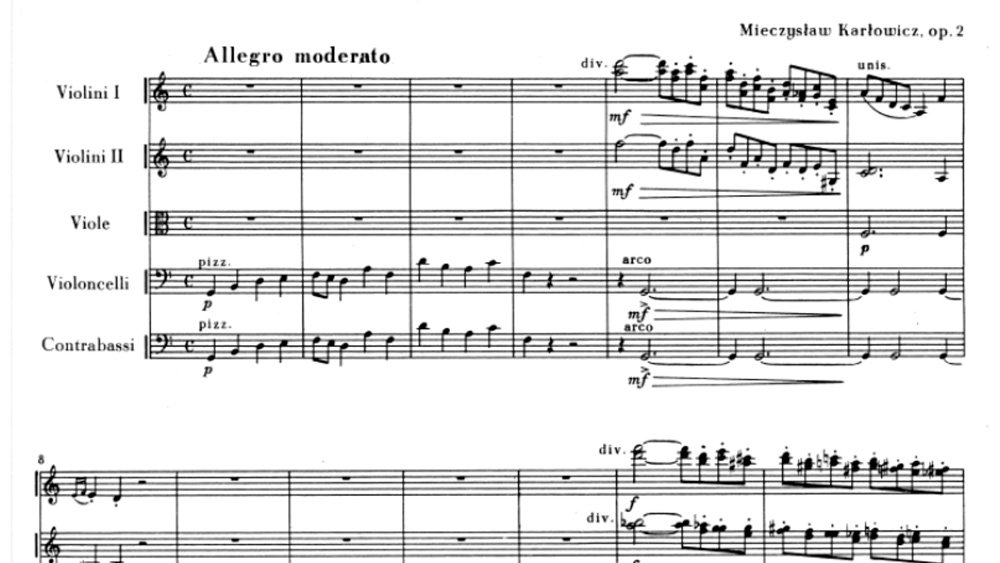
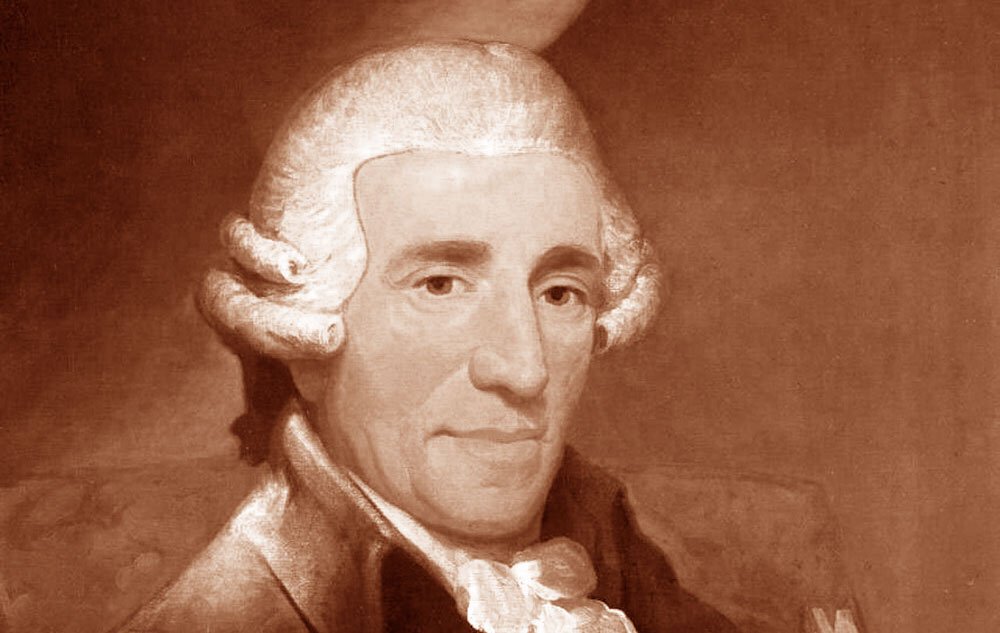
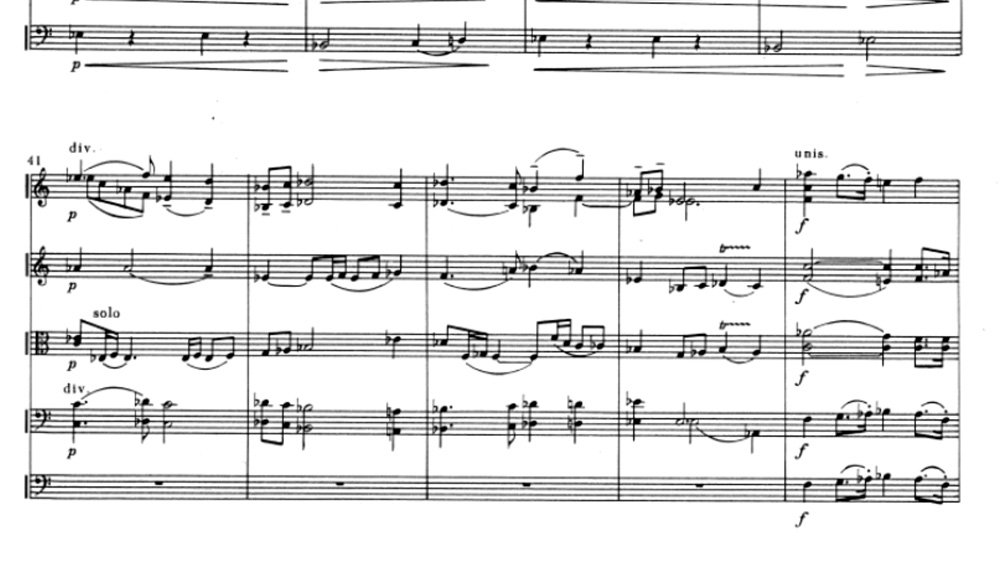
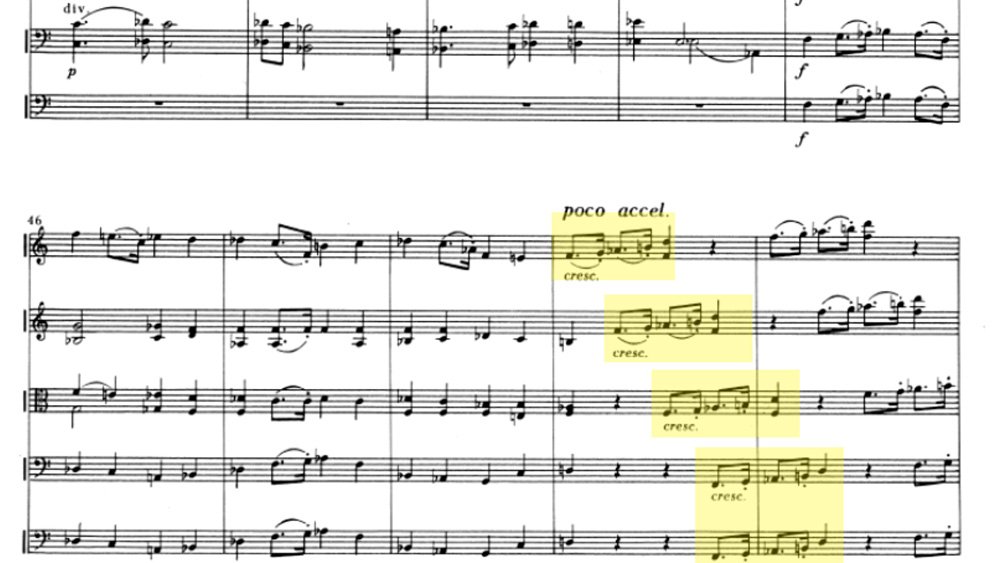
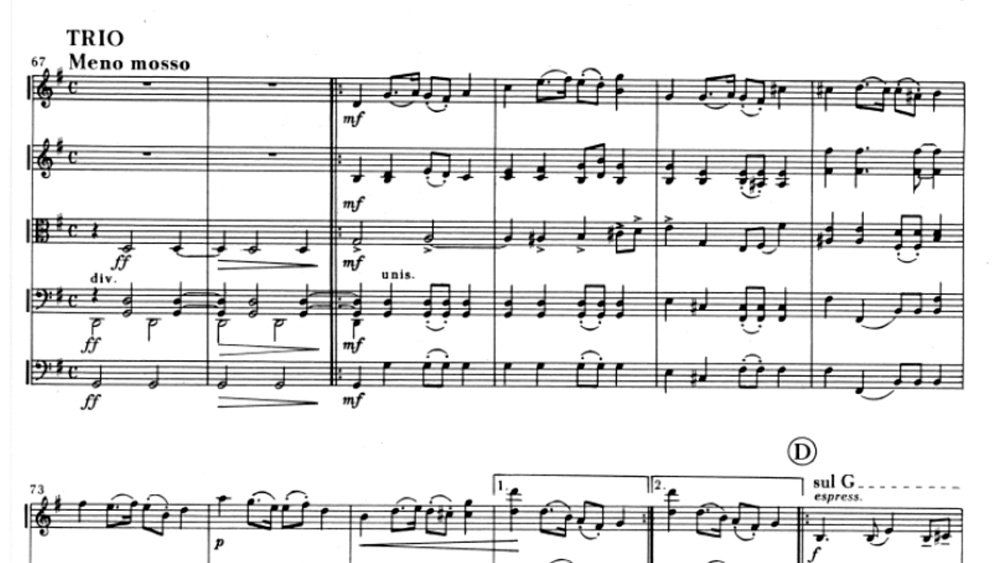
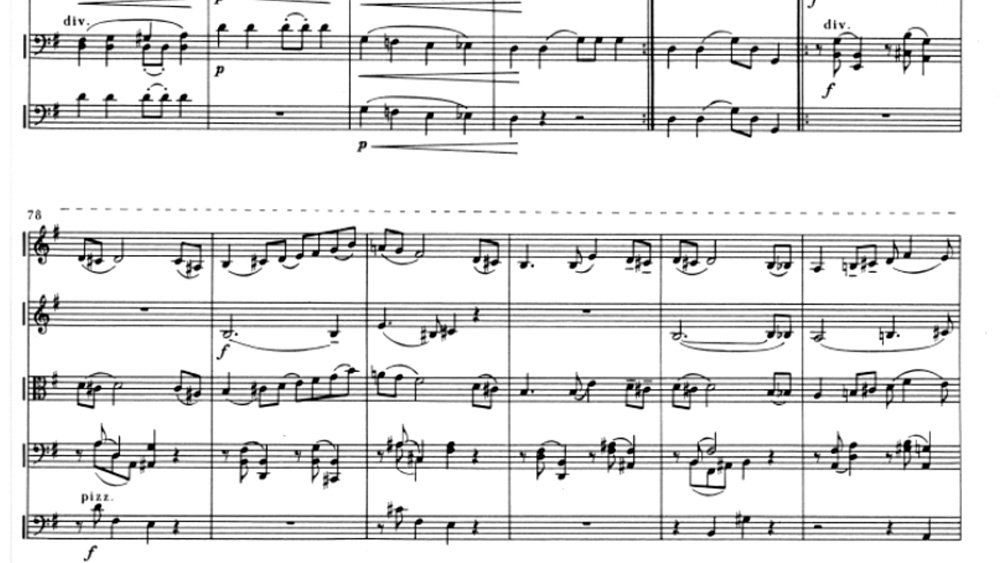
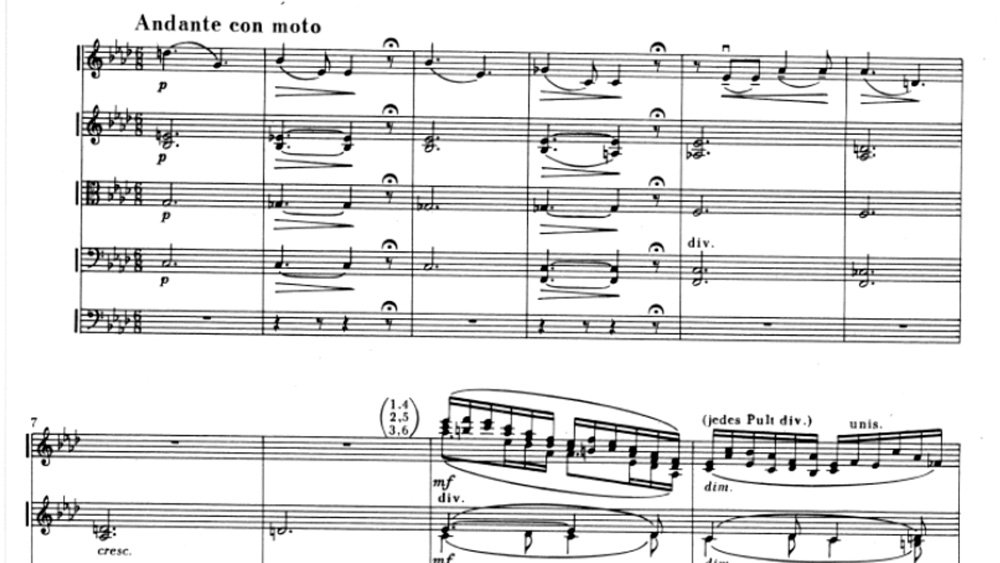
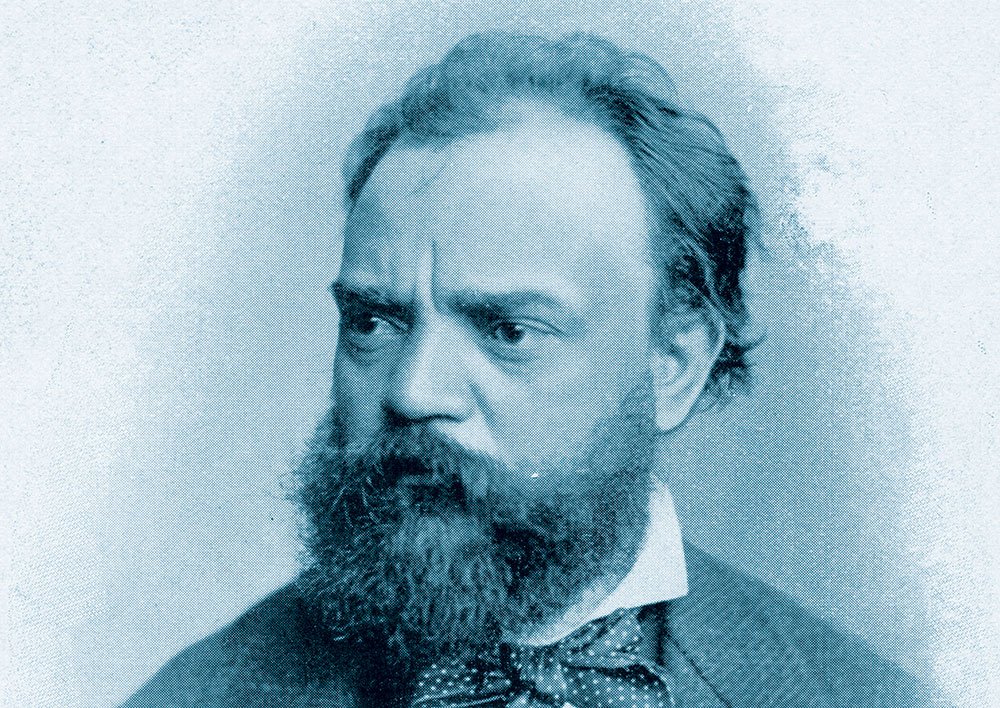
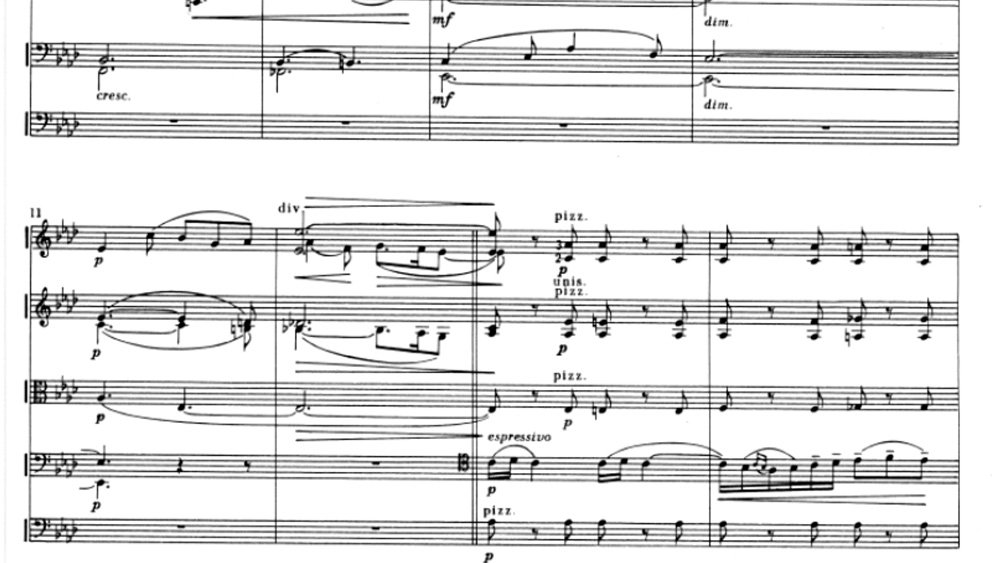

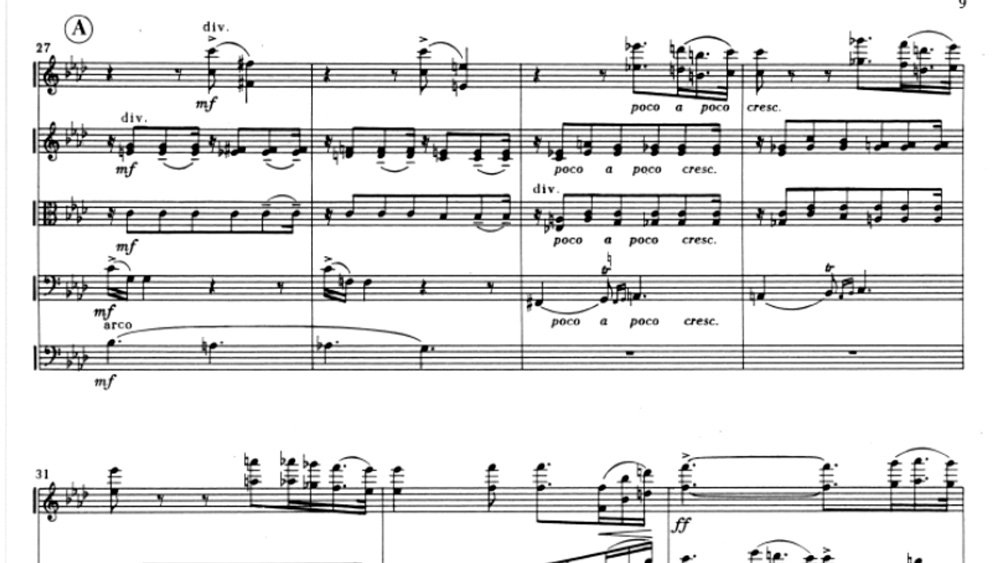
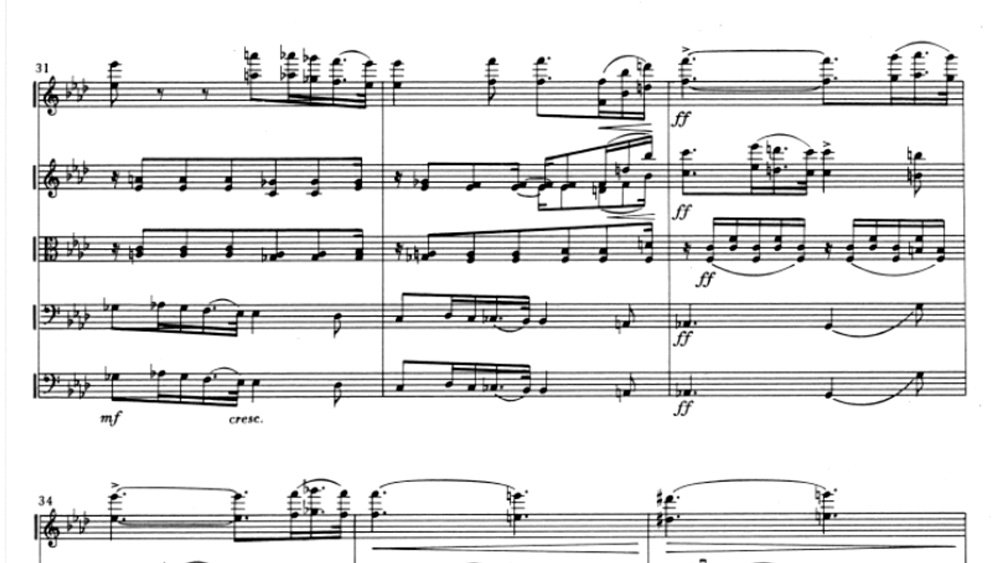
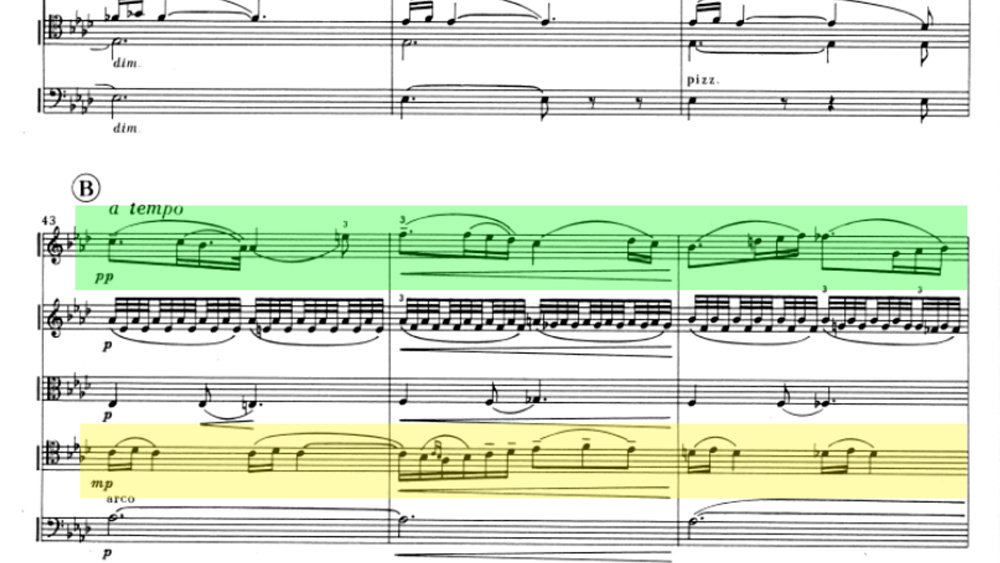
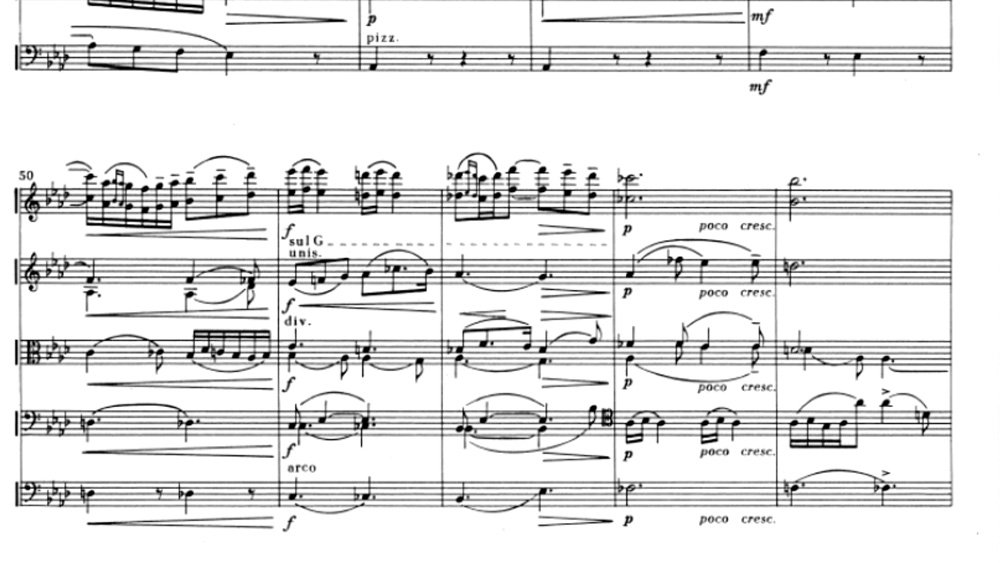
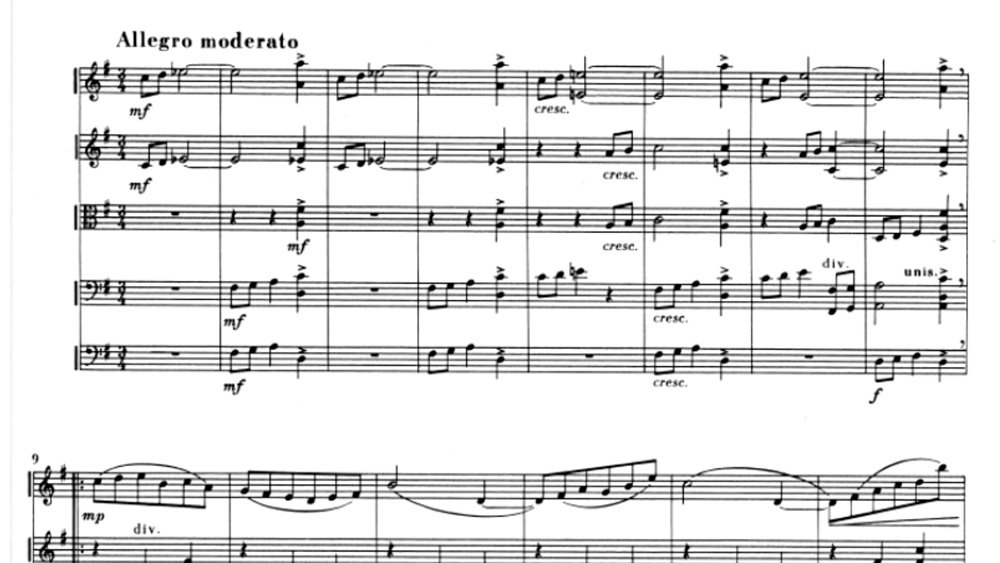

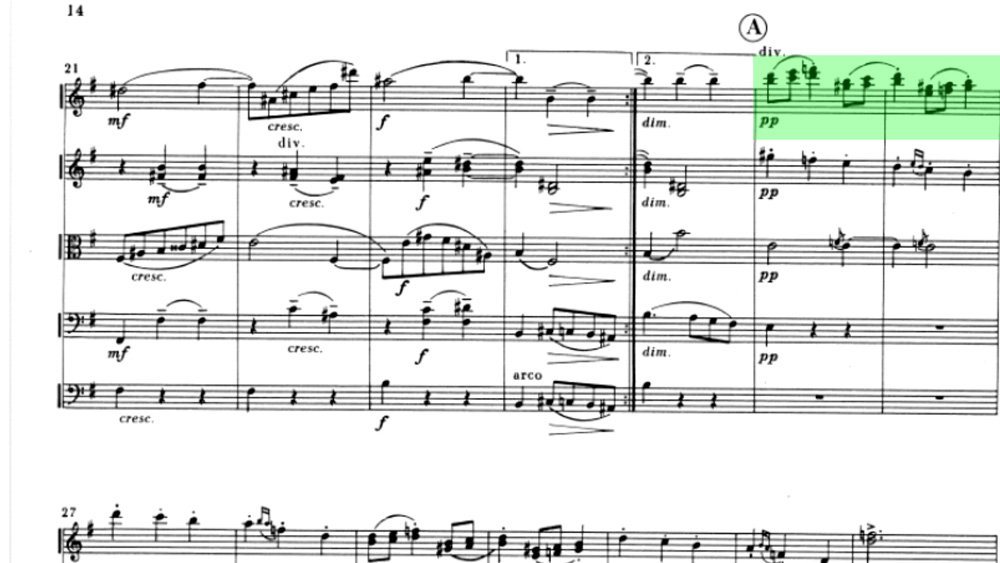
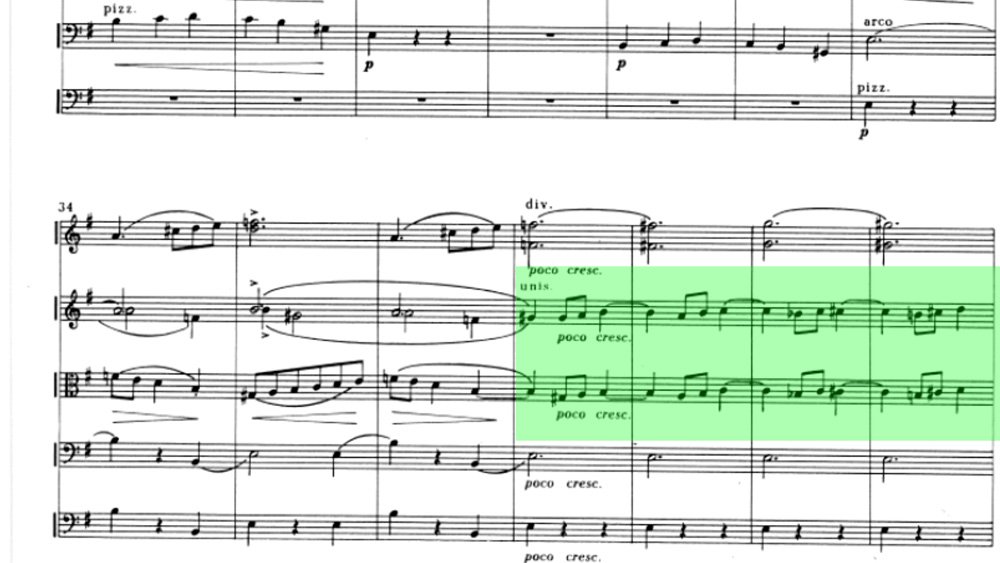
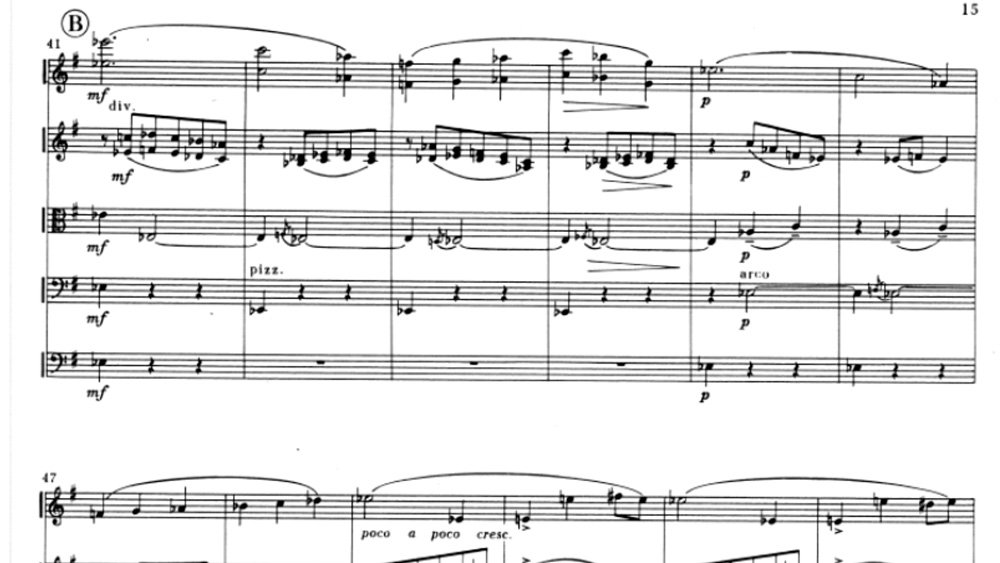
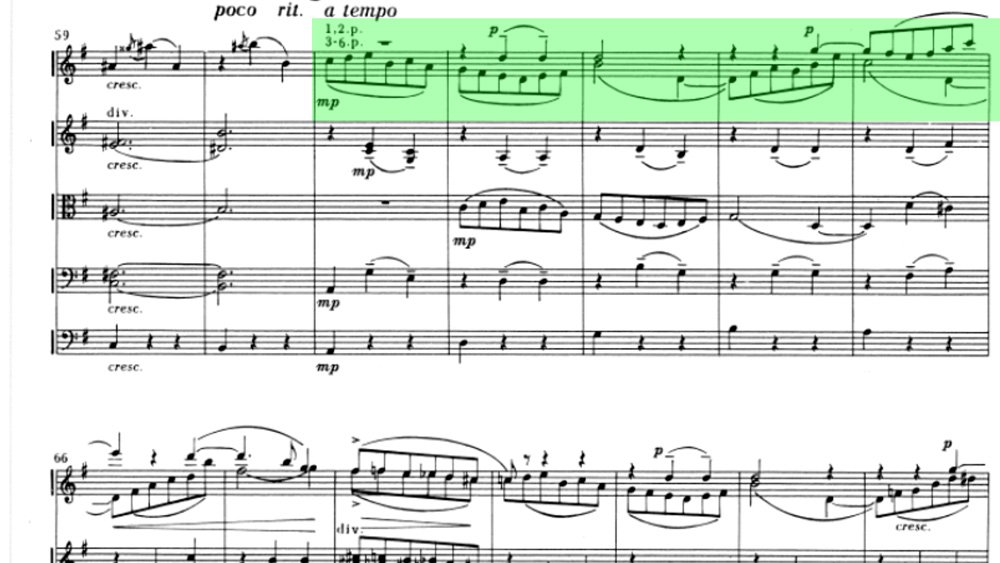
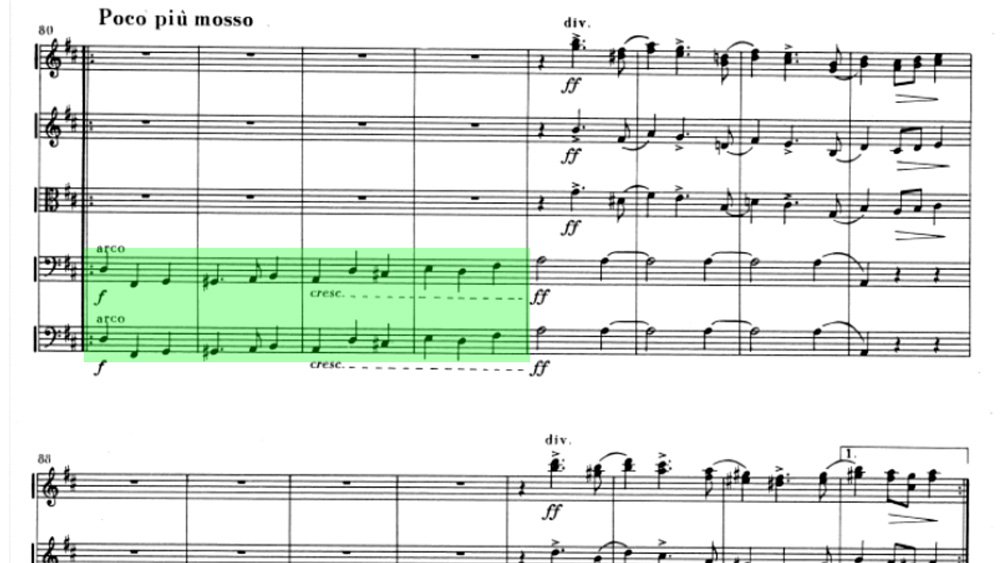
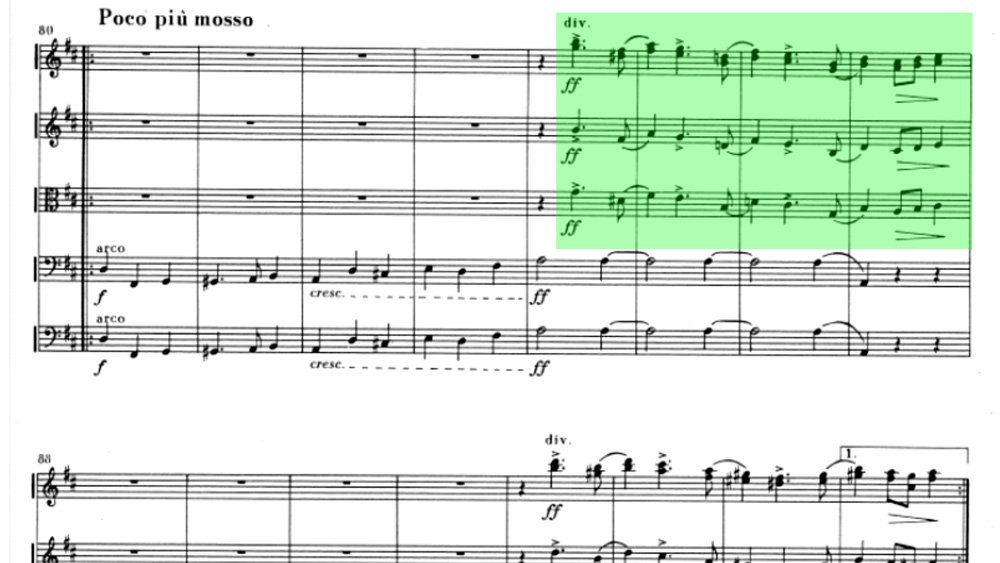
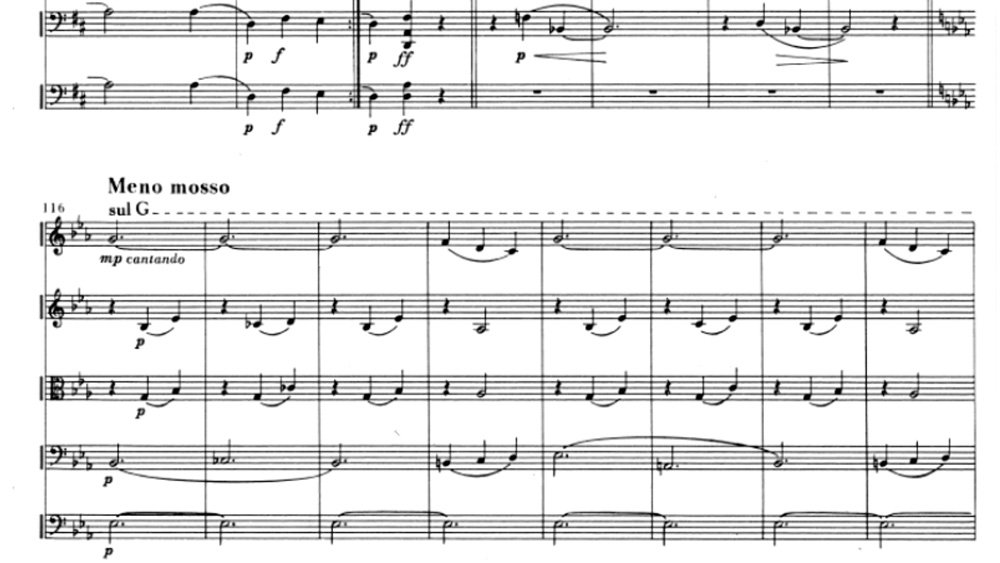
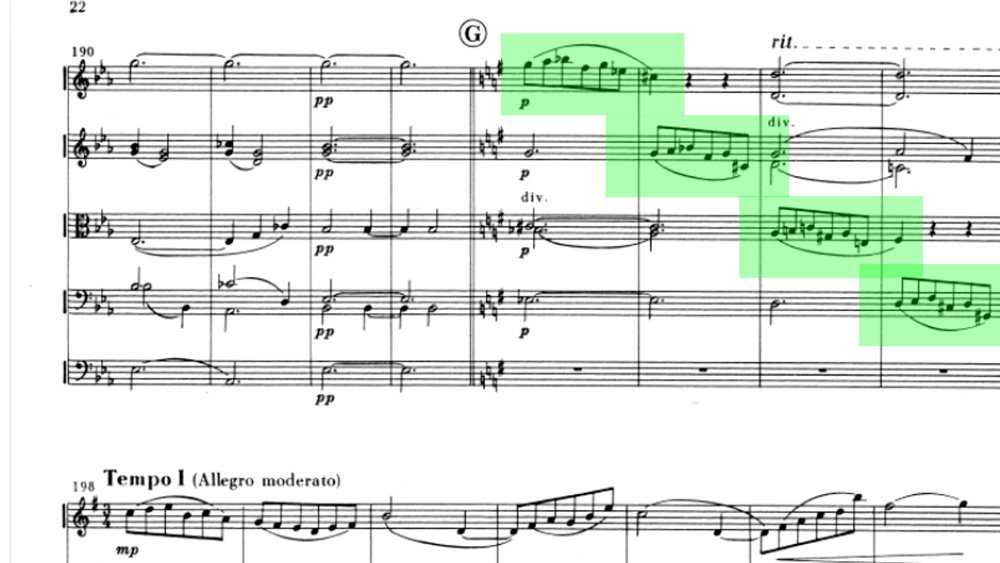
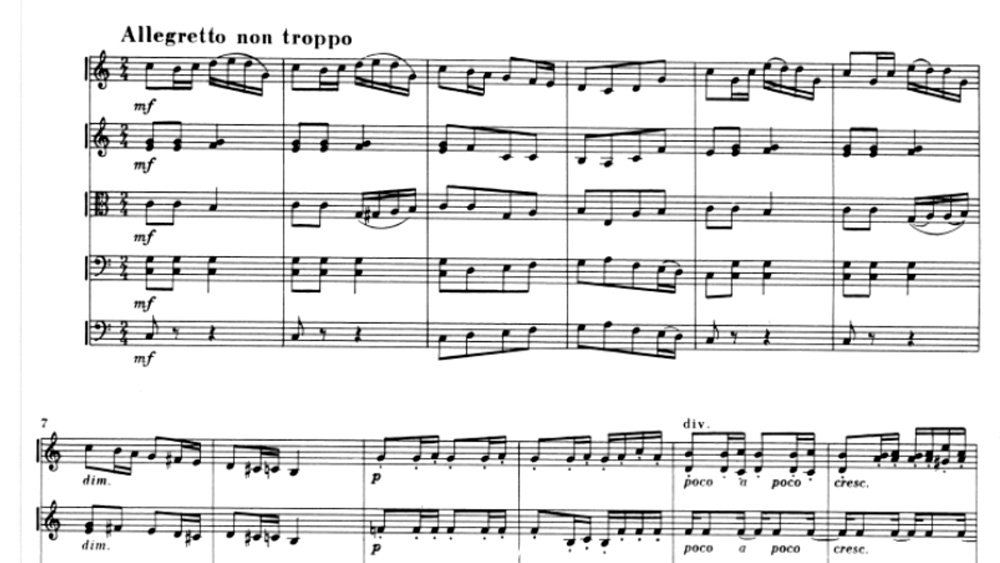
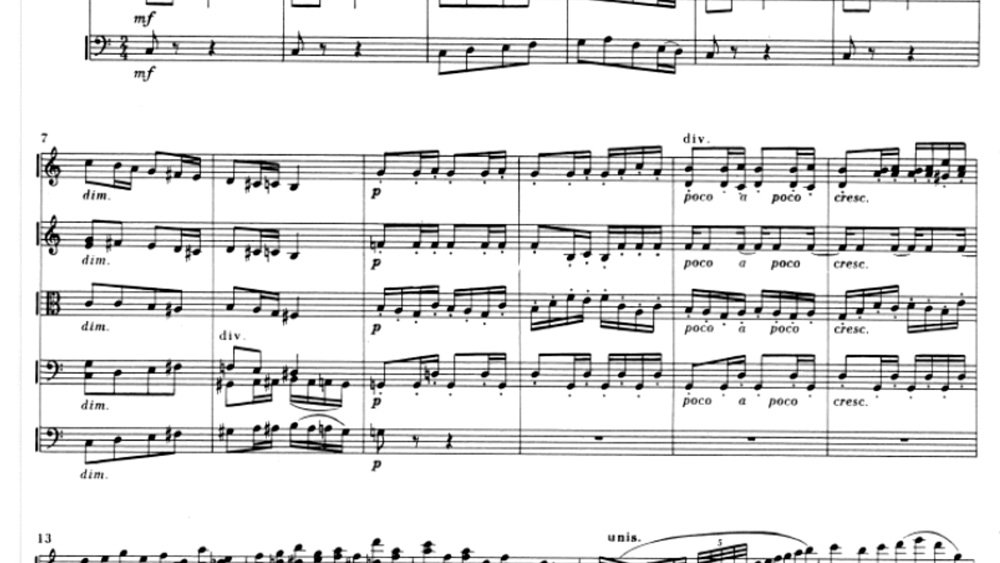

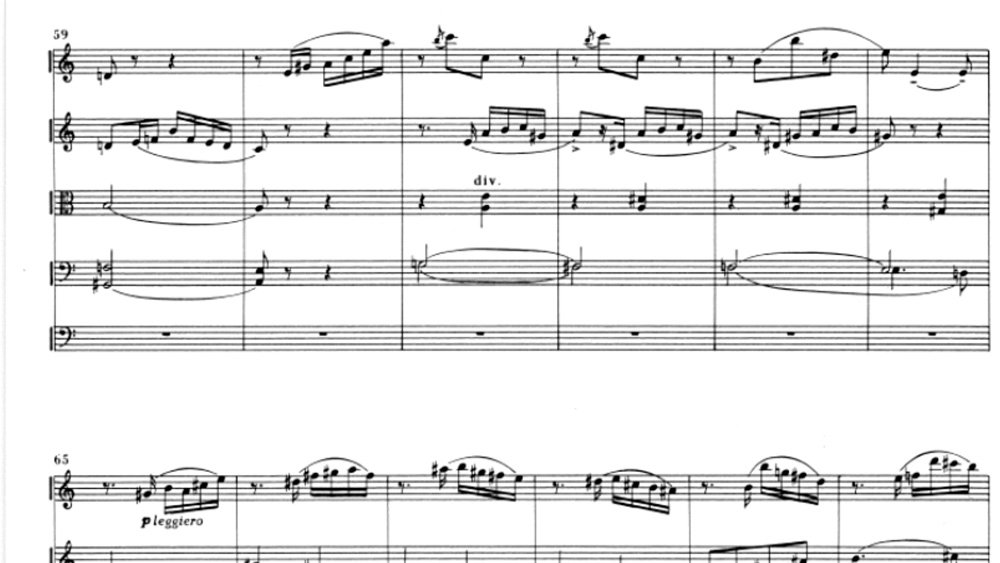
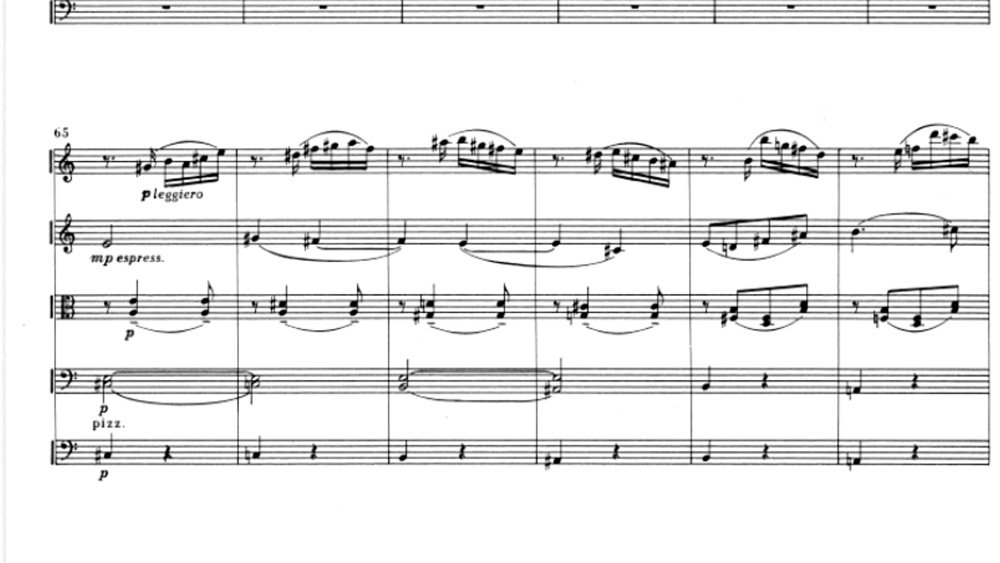
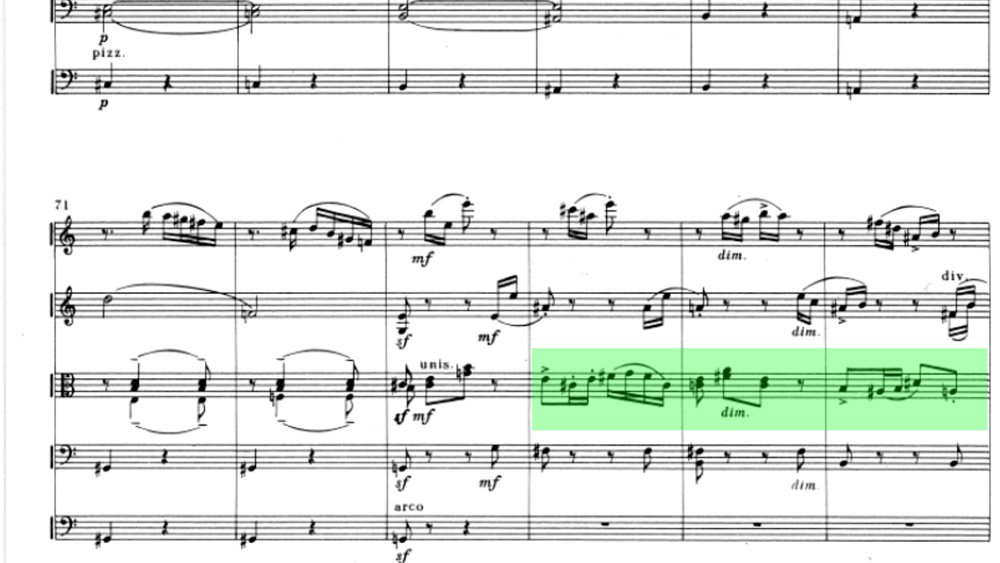
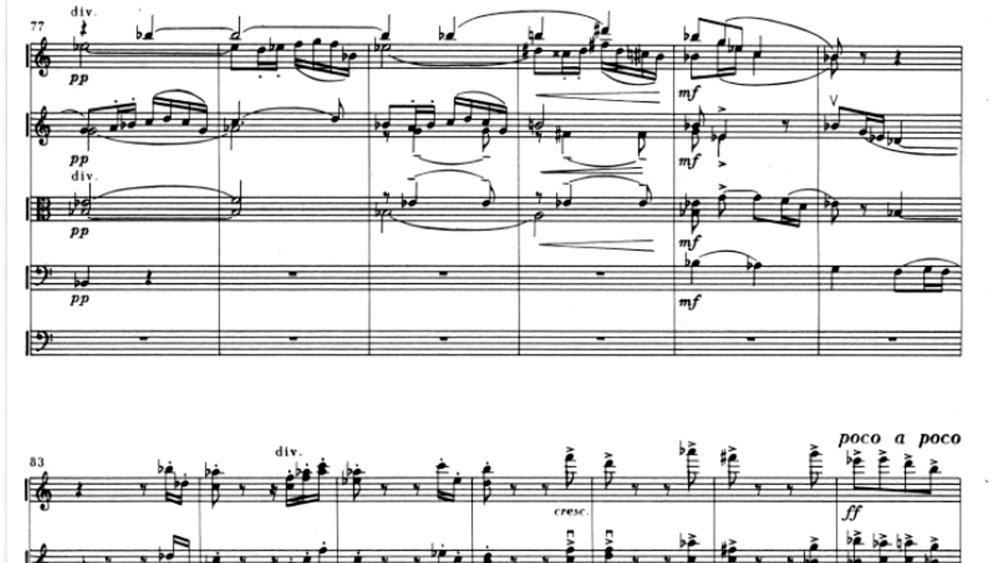
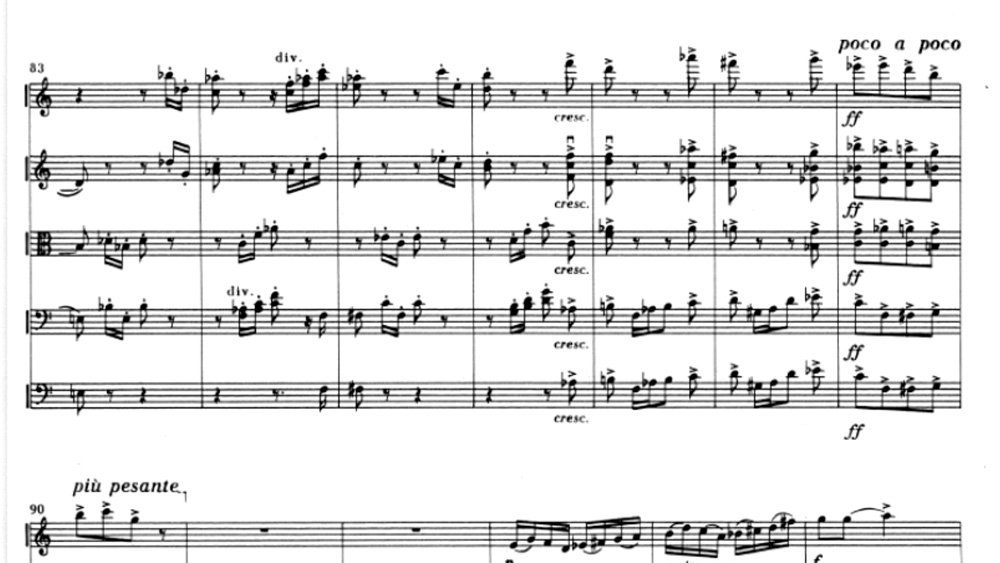
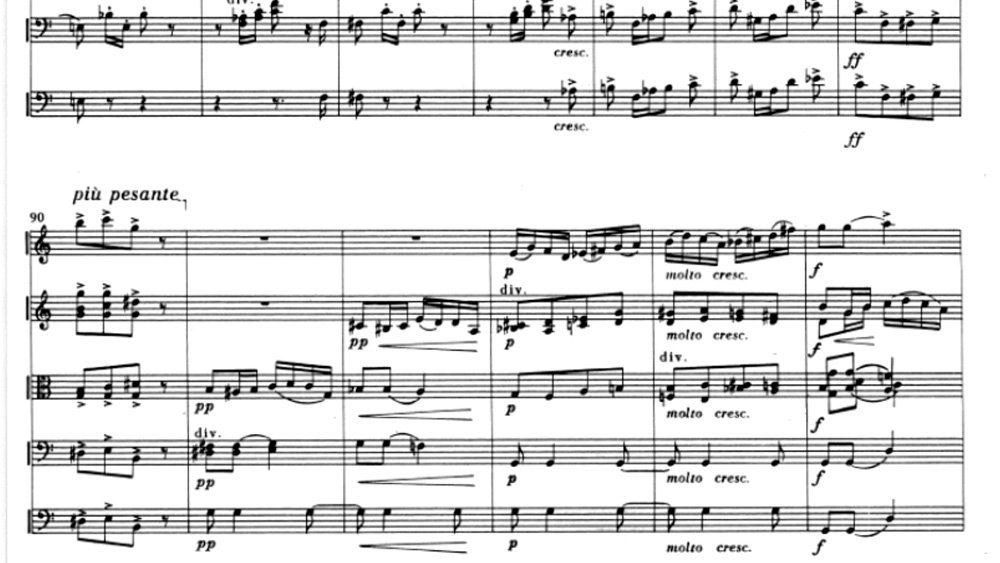
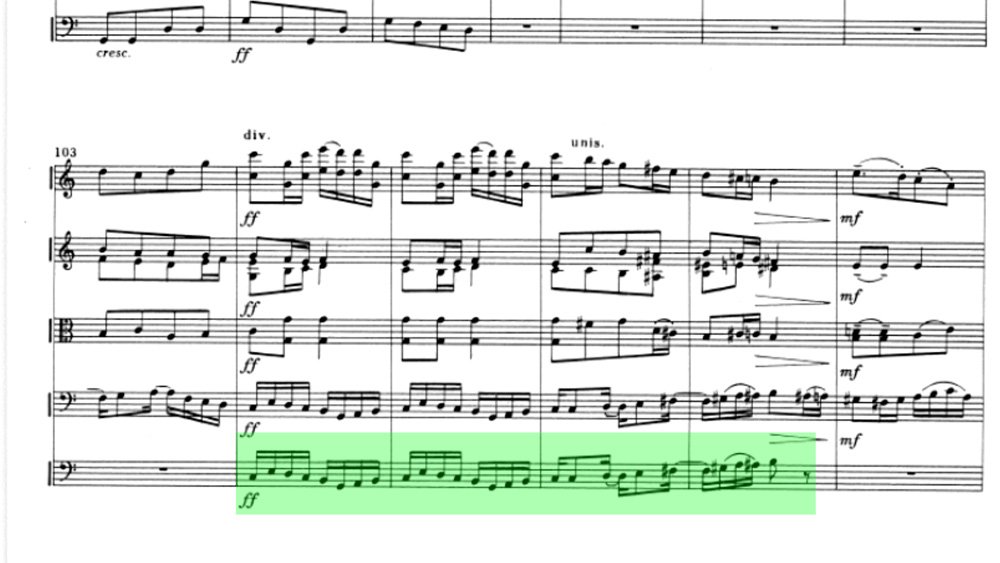
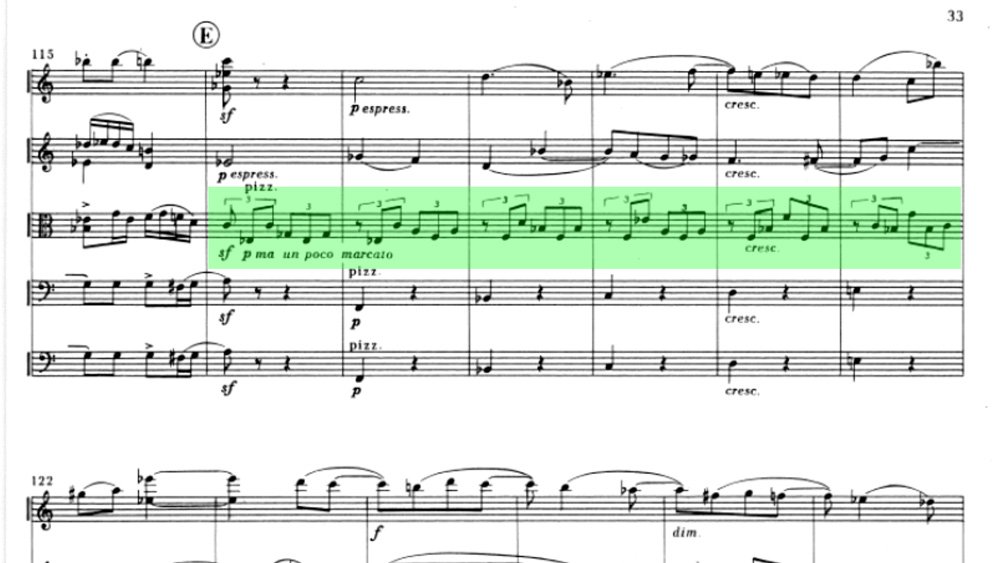




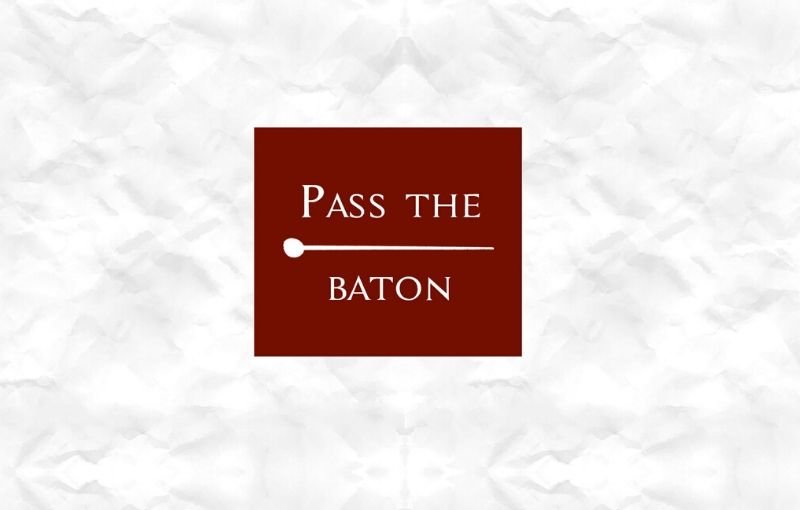
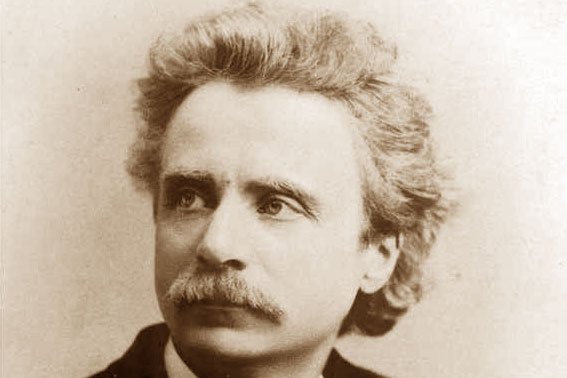
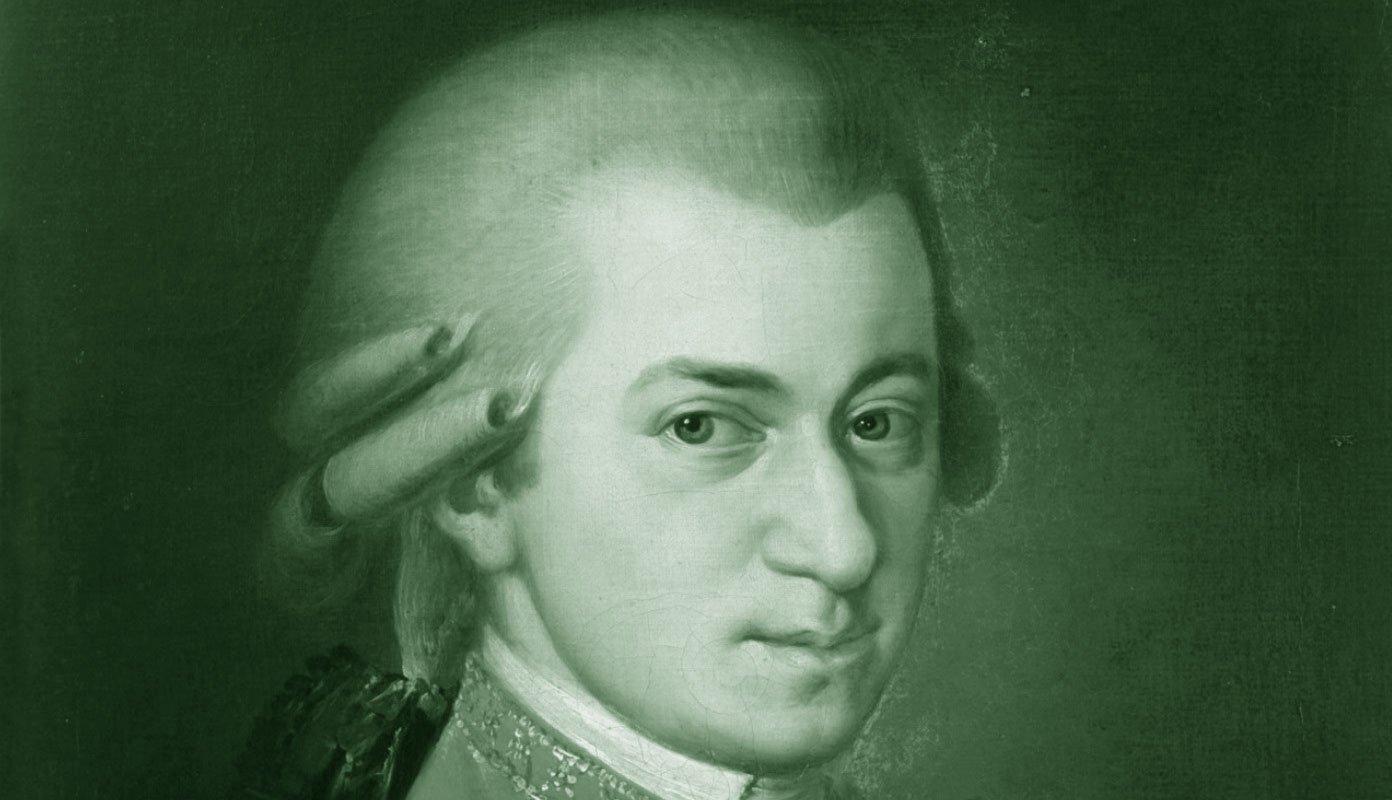


0 Comments